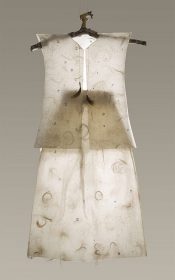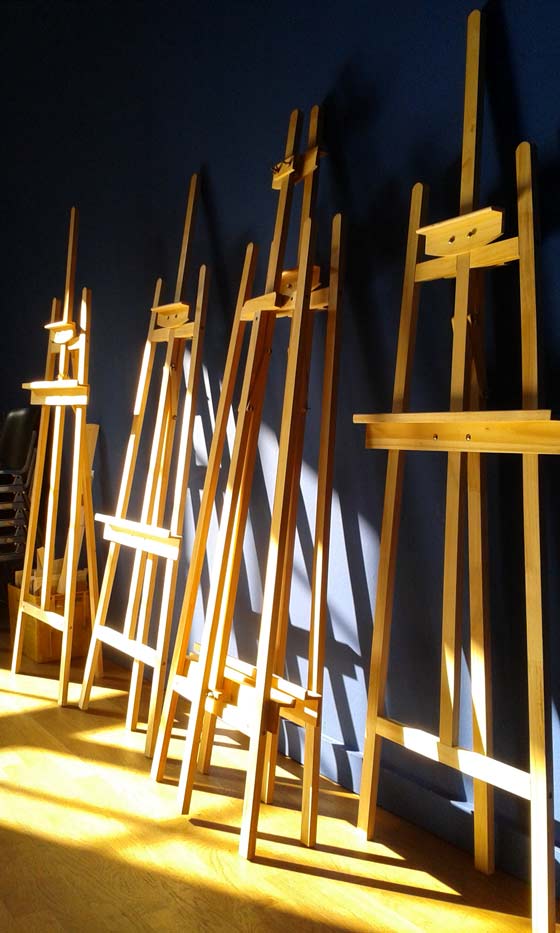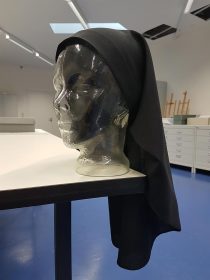Artist Andi Arnovitz Questions Traditional Matrimonial Law

The Dress of the Unfaithful Wife by Andi LaVine Arnovitz, 2009; photo: Avshlom Avital
In our current exhibition, Cherchez la femme, a transparent dress seems to reveal everything. The Israeli-American artist Andi LaVine Arnovitz created a delicate work of art from washi paper, hair, and Hebrew letters. Locks of hair adorn the paper dress, hinting at the beauty of its wearer. But how to interpret the other components, the grime and coarse body hair?
The individually placed letters are the key to understanding this piece. They point to the biblical ritual described in the Torah, Numbers 5: 11–31, on which this work is based: → continue reading

The Blue Room – things remain exciting! Photo: Barbara Rösch
A boat made of wood and painted canvas strips, a yodeling flamingo, a photograph of turquoise tiles from a Berlin subway station, two cake replicas, metamorphosed Ugaritic letters, a fisherman, a play. What do they all have to do with each other? They are all going to be exhibited at the Jewish Museum Berlin this summer.
And what do a car-body painter, well known in his native Iraq, an architect from Syria, a young Egyptian chef, a painter from the former Soviet Union, a Greek doctoral student, and a social worker from right here in Berlin have in common? They will all be exhibiting at the Jewish Museum Berlin this summer.
On July 12 a group exhibition entitled The Blue Room opens. It will be the high point of a meeting project that I have been supervising since January. → continue reading
A Visit with Sister Katharina at Karmel Berlin

Sister Katharina donated this veil to us for our exhibition; Jewish Museum Berlin, photo: Katharina Erbe.
Covering one’s head has almost entirely disappeared from Christian women’s devotional practice. In Germany, you only actually see veils on the sisters of Catholic religious orders. In preparing for the exhibition Cherchez la femme (more about it on our website) we all agreed early on that we wanted a nun’s veil.
So I set out for Karmel Regina Martyrum in the northern part of Berlin’s Charlottenburg district, a convent of Discalced (or Barefoot) Carmelites. The convent’s wardrobe mistress, Sister Katharina, greeted me at the door. After some discussion, her view on the matter emerged as fairly sober: some people may ascribe specific spiritual meaning to certain items of clothing but it was very personal issue. In any one community you can meet with a wide variety of attitudes and practices.
Our conversation about the meaning of their religious dress began with Sister Katharina sharing an anecdote: → continue reading


